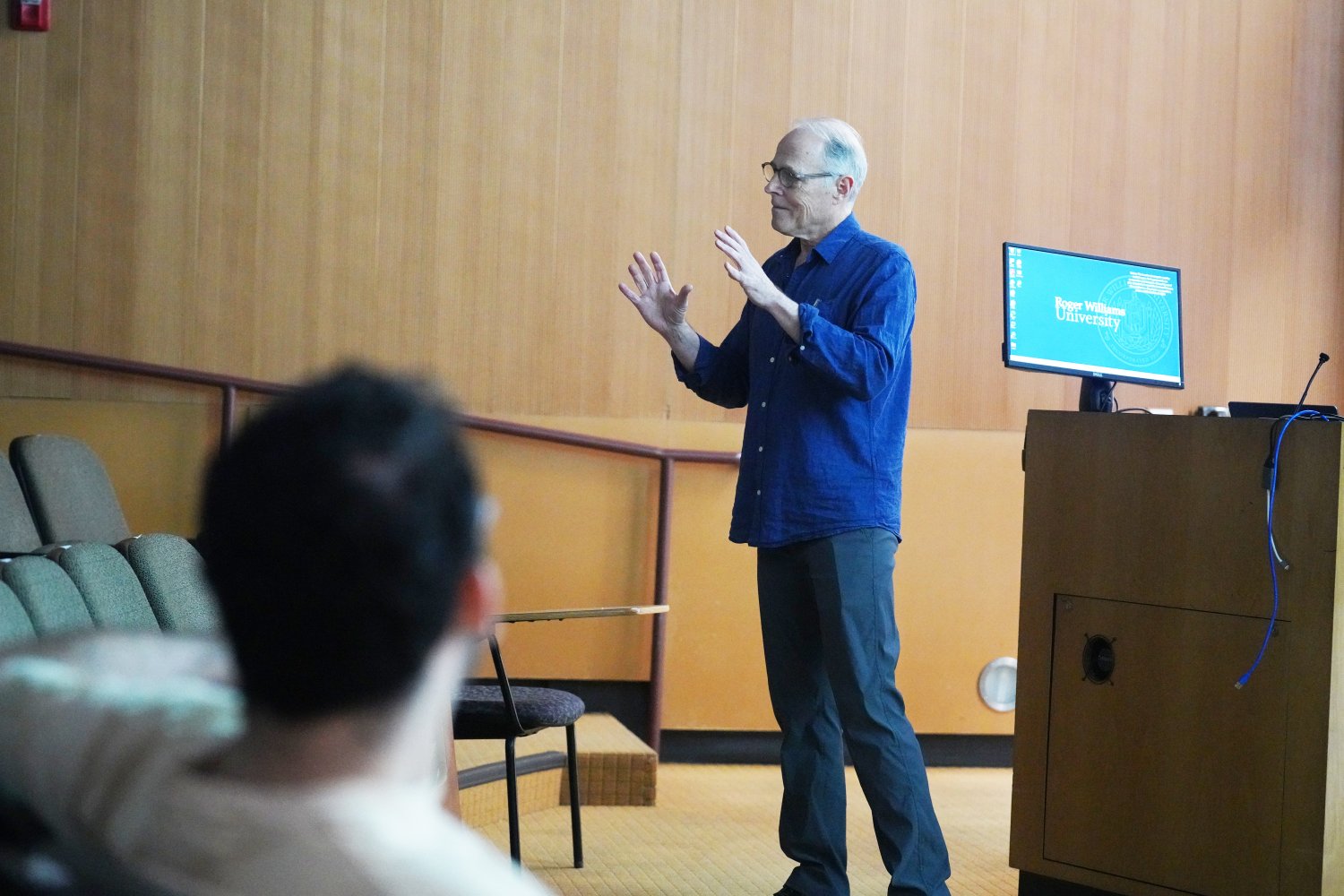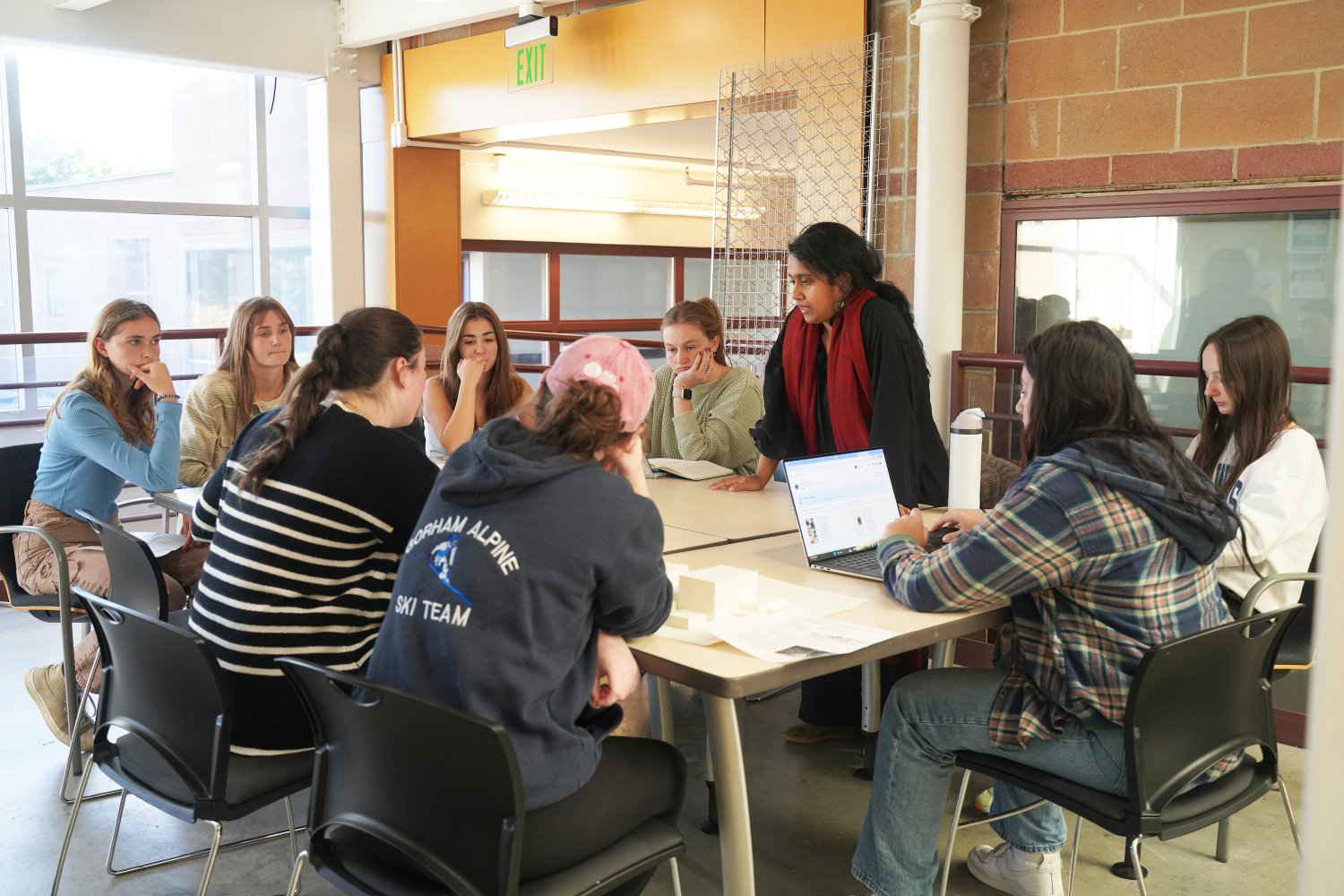Summer Academy Introduces High School Students to Architecture and Design
The 28th annual academy offered students a comprehensive exploration of design principles and practices through immersive workshops, faculty mentorship, and collaborative projects.

BRISTOL, R.I. – In the bustling studios of the Cummings School of Architecture, high school students dive deep into the imaginative world of architecture, immersing themselves in critical design discussions while pushing their creative boundaries. Now in its 28th year, the RWU Summer Academy in Architecture offers participants a comprehensive introduction to the field, blending hands-on experience with mentorship from RWU faculty, all while challenging them to think critically about architecture’s role in shaping the future of our built environment.
This summer, 29 rising high school juniors and seniors took an in-depth look at architecture as both a field of study and potential career path, completing numerous assignments covering fundamental architectural principles and contemporary practices while earning three college credits through a variety of studio, fieldwork, and extracurricular activities. Students also engaged in team design challenges, collaborated on large-scale projects with RWU Architecture majors, and received guidance on the college admissions process and portfolio development, enhancing their applications for post-secondary education.

As part of the four-week program, campers immersed themselves in a dynamic drawing workshop focused on architectural storytelling. Led by Hanisha Thirth BennaBhaktula, an adjunct professor of Architecture, and teaching assistant Ignacio Burgos, a sophomore Architecture major from Portsmouth, R.I., the biweekly sessions emphasized the power of narrative in spatial design. Students explored how movement through different spaces creates a sequence of experiences by documenting their surroundings through photography and sketches, forming foundational skills to help develop their own creative vision.
"Architecture is all about storytelling," Thirth explained. "Whether you're transitioning from one space to another or having a conversation, it's about the beauty of the narrative. As you move from the outside of the campus into a building and then into a classroom, the experience is shaped by how these spaces are sequenced and how people interact with them. My goal is to help students understand how people respond to these spatial transitions."
The workshop was tailored to strengthen students’ understanding of structural techniques while encouraging them to apply these lessons in their broader practice. With exercises focused on how small details like the hardness of a pencil or the angle of a line can change the perception of a design, students gained a new appreciation for the subtleties that shape architectural work. From conceptual sketches to real-world applications, they were encouraged to think critically about how architecture impacts the way people move and feel within spaces.
"What we're practicing here is designed to deepen students' understanding of space and transitions, incorporating techniques they haven't learned before," Burgos said. "We want them to observe how different tools, like a darker pencil, affect their architectural vision and apply these techniques in their conceptual sketches. Ultimately, the goal is to encourage them to think about and view architecture both within and outside the classroom so they can better visualize and create their own designs."
Through an enriching lecture series, participants engaged with nearly a dozen Cummings School of Architecture faculty members, each offering unique insights into the field. Dean Stephen White introduced students to the fundamentals of architecture and the role of architects, while Karen Hughes, an adjunct professor, provided guidance on becoming a licensed architect and establishing a design firm.

In his presentation, Professor Edgar Adams explored the essential function of cities as hubs of economic activity and cultural exchange, using Newport, R.I.’s evolution as a case study. He emphasized how architecture crucially shapes city formation and identity, comparing the historical and topographical influences seen in European countries with the grid-like layouts of American cities to showcase the distinctive features of Newport’s urban landscape. By contrasting Newport’s transformation from a major colonial port to a modern tourist destination with other cities like Siena, Italy, Adams highlighted the dynamic interplay between historical preservation and contemporary development, underscoring the role of architecture in preserving a city’s legacy while accommodating change.
Adams concluded his talk by applauding the students’ commitment to the field of architecture and reminding them of the far-reaching influence architects have on the world around them. "Choosing architecture is not just about selecting a profession; it's about embracing a way of life,” he said. “It’s something that involves great responsibilities and extraordinary opportunities, setting you on a path to shape the world in meaningful ways. You’re building toward something much bigger than yourself, a future where your work has a lasting impact.”
The Summer Academy culminated in a graduation ceremony that celebrated the students’ hard work and achievements. Family members filled the gallery, admiring the high-quality models and intricate sketches that lined the room, each representing the students' creative evolution over the past four weeks. White and Associate Dean Gregory Laramie shared in the pride and excitement as scholars showcased their projects and exchanged stories with faculty about the challenges they overcame and the new perspectives they gained.
“Dean White and I were highly impressed by the students' approaches and thought processes throughout the Summer Academy,” Laramie said. “The quality and quantity of work produced in such a short period surpassed previous groups, demonstrating remarkable development and collaboration.”

Mentorship Continues Beyond Summer Session
On Oct. 15, Summer Academy alumni returned to RWU for a day of skill sharpening, courses on architectural fundamentals, and reconnection with faculty and peers.
For Lindsay Maine, a senior at Chariho Regional High School, the reunion was a natural extension of the immersive experience she enjoyed during the summer. Reflecting on the academy, she described it as “a perfect, well-rounded introduction to architecture” that fueled her passion for design.
"I loved how much I could broaden my horizons and put my creativity into something tangible, especially in the studio where we made models,” said Maine, who has been accepted to RWU for Fall 2025. “It was exciting to take an idea and bring it to life, combining my passion for arts and crafts with the process of creating something real."
Maine noted that the Summer Academy’s impact went beyond creative development, also preparing her for the realities of the field. “It helped me realize how much I enjoy architecture and put things into perspective, especially when it comes to time management,” she said. “It was great to connect with others who shared my interests, and I loved the freedom to be creative, like being able to bring a notebook and draw whenever I wanted without feeling out of place.”
